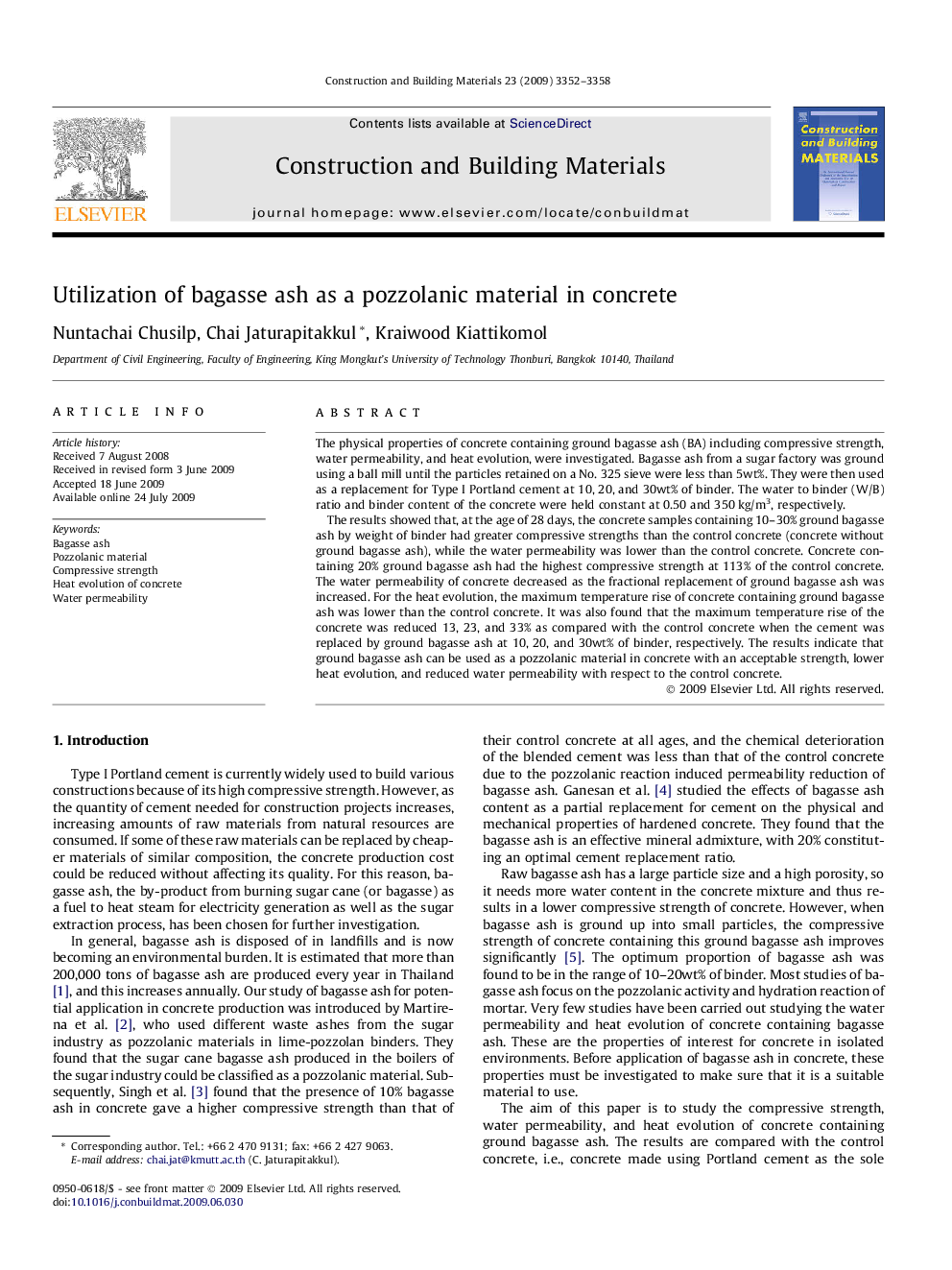| کد مقاله | کد نشریه | سال انتشار | مقاله انگلیسی | نسخه تمام متن |
|---|---|---|---|---|
| 260021 | 503649 | 2009 | 7 صفحه PDF | دانلود رایگان |

The physical properties of concrete containing ground bagasse ash (BA) including compressive strength, water permeability, and heat evolution, were investigated. Bagasse ash from a sugar factory was ground using a ball mill until the particles retained on a No. 325 sieve were less than 5wt%. They were then used as a replacement for Type I Portland cement at 10, 20, and 30wt% of binder. The water to binder (W/B) ratio and binder content of the concrete were held constant at 0.50 and 350 kg/m3, respectively.The results showed that, at the age of 28 days, the concrete samples containing 10–30% ground bagasse ash by weight of binder had greater compressive strengths than the control concrete (concrete without ground bagasse ash), while the water permeability was lower than the control concrete. Concrete containing 20% ground bagasse ash had the highest compressive strength at 113% of the control concrete. The water permeability of concrete decreased as the fractional replacement of ground bagasse ash was increased. For the heat evolution, the maximum temperature rise of concrete containing ground bagasse ash was lower than the control concrete. It was also found that the maximum temperature rise of the concrete was reduced 13, 23, and 33% as compared with the control concrete when the cement was replaced by ground bagasse ash at 10, 20, and 30wt% of binder, respectively. The results indicate that ground bagasse ash can be used as a pozzolanic material in concrete with an acceptable strength, lower heat evolution, and reduced water permeability with respect to the control concrete.
Journal: Construction and Building Materials - Volume 23, Issue 11, November 2009, Pages 3352–3358